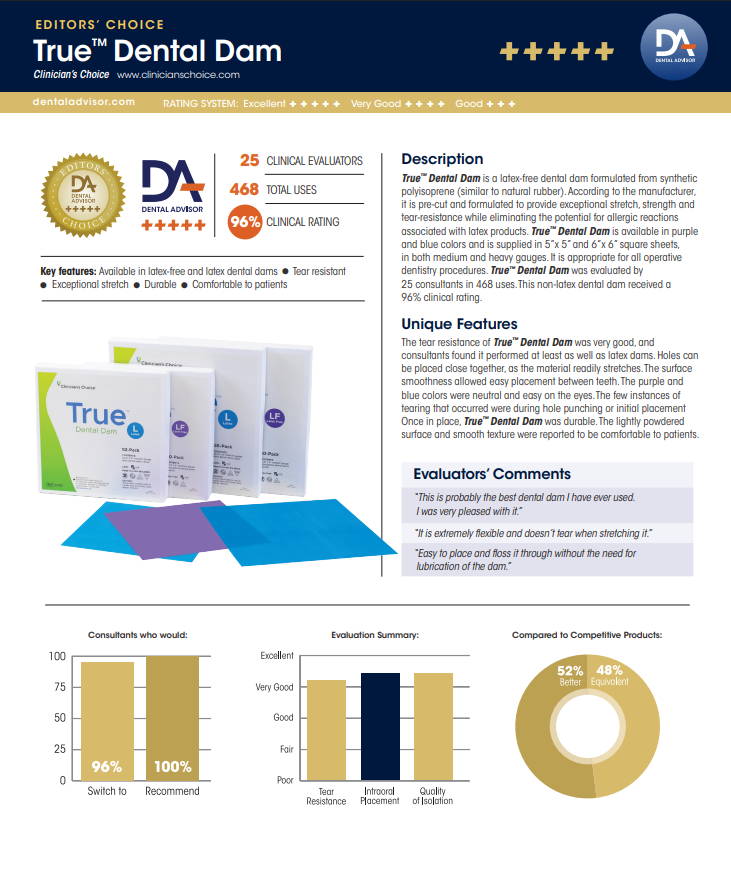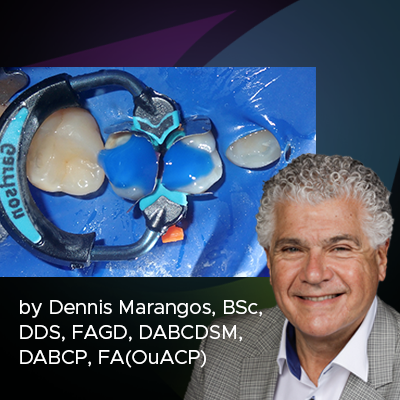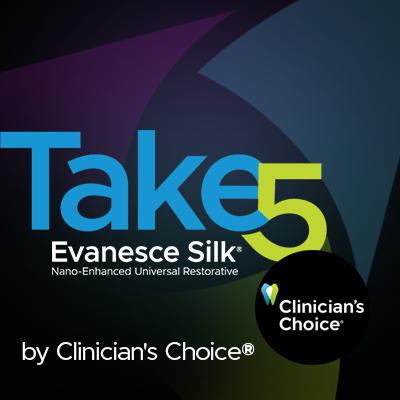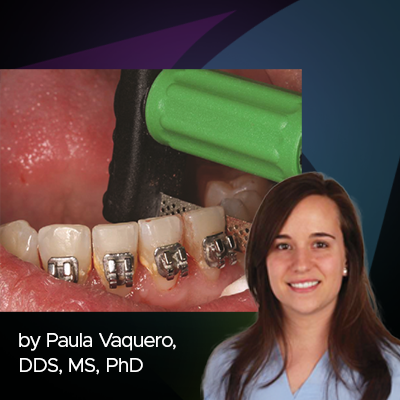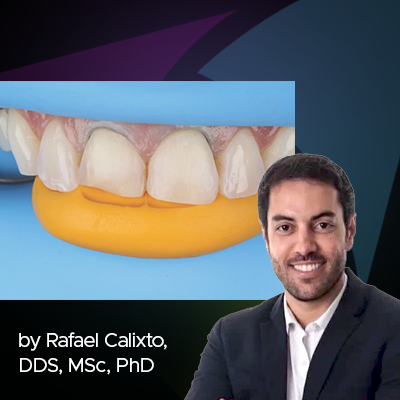
Closer Look: True™ Dental Dams Stand Out From the Crowd
The Clinician’s Choice rubber dams stand out among others due to their versatility, tear resistance, flexibility, and colour
Rubber dams provide isolation to prevent contamination of endodontic and restorative preparations and to protect the oral cavity and throat from materials and equipment used in dental procedures. They prevent the oral cavity and the working field from contaminating one another.
Rubber dams are a standard of care for endodontic procedures. Surprisingly, only 47% of 1490 US dentists who participated in a National Dental Practice-Based Research Network survey reported always using rubber dams during root canals. Rubber dams should be used for every root canal to prevent oral bacterial contamination of the root canal system and inadvertent dropping of files into the patient’s throat.

Dentistry and photography courtesy of Bob Margeas, DDS
The use of rubber dam isolation for restorative procedures, on the other hand, may not be considered standard of care by all dental practitioners. Another National Dental Practice-Based Research Network study found that 63% of dentists never used rubber dams for restorative procedures. Additionally, only 12% of the 9890 restorations observed in the study were performed with rubber dams. Despite the relatively low use of rubber dams for restorative procedures in the US, they provide many clinical advantages.
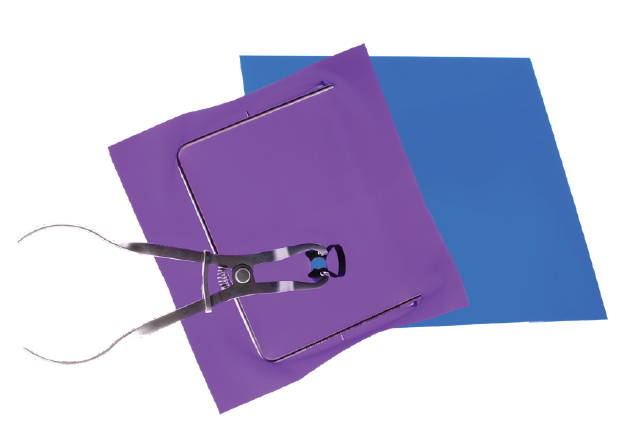
The True™ Dental Dam from Clinician’s Choice® is a type of rubber dam that provides benefits for both endodontic and restorative procedures. Its biggest advantage may be its good tear resistance.
“I think the No. 1 advantage of the material is that it’s a good balance between being flexible enough so that you can stretch it over the teeth and floss into contact,”
says Dr. Lawson. “But it’s not too stretchy such that it can still retract tissues, especially the medium gauge.” True Dental Dams come in blue latex and purple latex
free options with an opaqueness that contrasts with the teeth, making for easier visuals. “Sometimes they make rubber dams that are too translucent so that you can
kind of see through the rubber dam, which can be a little bit tricky if you stretch it,” says Dr. Lawson. “And it’s translucent and you don’t actually know if the rubber
dam is covering up everything that you want it to.”
With the rubber dam’s different gauges, there are a variety of thicknesses that can be used. Medium gauge dams will be easier to stretch over and floss between
teeth, providing the flexibility necessary for certain procedures and mouths. Thicker, heavy gauge True Dental Dams retract tissue better, pushing it out of the
way during the procedure.
“The thing that makes the True Dental Dam different is its handling. It’s got a good tear resistance, it comes in different materials, latex and latex free, different
gauges, and then it also comes in two different colours. It’s a little treat. You get to work with a material that’s just made well,” says Dr. Lawson. “It’s not a complicated thing, but it does make this process of using a rubber dam a little bit easier and more fun. It sounds weird to say more fun, but it’s more fun.
About the Author

Nate Lawson, DDS, MA, PhD
Nate Lawson is the Director of the Division of Biomaterials at the University of Alabama at Birmingham School of Dentistry and the program director of the Biomaterials residency program. He graduated from UAB School of Dentistry in 2011 and obtained his PhD in Biomedical Engineering in 2012. His
research interests are the mechanical, optical, and biologic properties of dental materials and clinical evaluation of new dental materials. He was the 2016 recipient of the Stanford New Investigator Award and the 2017 3M Innovative Research Fellowship both from the American Dental Association. He served on the American Dental Association Council of Scientific Affairs and is on the editorial board of The Journal of Adhesive Dentistry and Compendium. He has lectured nationally and internationally on the subject of dental materials. He also works as a general dentist in the UAB Faculty Practice.
Discover More
This article was published in the Clinical Life™ magazine: Winter 2025 edition
Clinical Life™ magazine is a premier periodical publication by Clinical Research Dental Supplies & Services Inc. Discover compelling clinical cases from Canadian and US dental professionals, cutting-edge techniques, product insights, and continuing education events.

